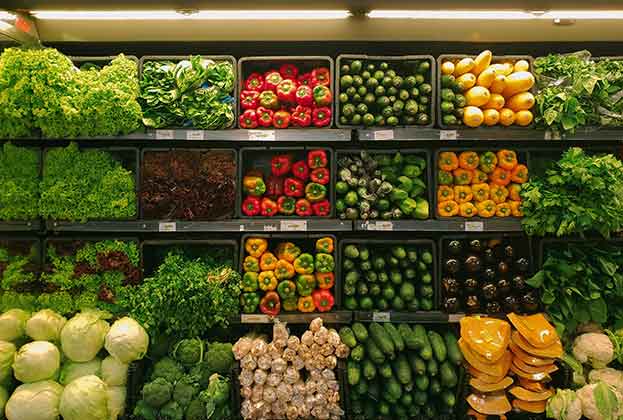Not all essential retailers had the capacity to stay open at the beginning of lockdown
The practicalities of remaining open and keeping both staff and the public safe from the virus proved difficult for some retailers, with the essential retailers in the bulky goods sector the most prominent example. DIY, home and hardware shops, as well as equipment, plant and tool hire outlets, were all included on the government’s essential retailers list. What supermarket operators are to feeding the UK, home repair and maintenance retailers are to keeping people properly sheltered.
As a result, most DIY and home improvement stores remained open for trade immediately after the measures were imposed, with sales in stores actually accelerating as people faced the prospect of increased time at home. Kingfisher (owner of Screwfix and B&Q) reported that sales increased by 38% in the third week of March compared with the same period in 2019.
However, the difficulties faced by these retailers in their stores soon became apparent. DIY retailers typically occupy large stores and with staff levels inevitably dropping as a result of the virus, many operators struggled to maintain sufficient staff numbers on the shop floor.
Furthermore, the sheer scope of goods DIY and hardware stores sell meant that many of their products fell outside of the ‘essential’ category meaning stores faced the prospect of having to rope off sections deemed to be selling ‘non-essential’ items such as bathrooms and kitchens. It’s therefore perhaps unsurprising that in light of these factors, a number of major DIY and hardware stores took the decision to close, despite receiving government approval to remain open.
There seemed therefore to be a disparity between what was considered as essential and allowed to continue trading and what actually remained open after lockdown. Removing the biggest retail warehousing DIY operators from our calculations sees the proportion of essential retailers represented by the out of town market remain at 6% by unit but, perhaps more importantly, fall from 54% to 47% by sq ft, owing to the scale of their store formats. In terms of the out of town market in isolation, without B&Q, Homebase and Wickes the proportion of retail warehousing that was allowed to trade versus what actually remained open falls from 31% to 29% by unit and 61% to 53% by sq ft (see below).
However, even without the main DIY operators the out-of-town sector still displayed a greater degree of robustness compared to high street and shopping centres. In reality, the degree of resilience this sector has shown lies somewhere between the proportion of retailers deemed as essential in the sector, following the closures, and the proportion who actually chose to stay open immediately after the government issued their advice.
This is evidenced in the fact some of the major DIY operators began reopening their stores in the last week of April, having had time to better equip themselves to cope with staffing and store configuration issues, as well as devise a strategy to meet with the unprecedented demand they saw a shift to their online platforms immediately after their closures. B&Q had to temporarily shut down its website in the first week of April, whereas Wickes and Homebase customers were faced with lengthy virtual queues after their stores initially closed.
All of B&Q’s 288 UK stores are now open to the public, albeit with strict social distancing measures in place. Since closing stores in March the retailer has made a staged return to trade, initially trialling their newly adopted safety procedures in 14 of their stores and subsequently rolling those measures out further, opening a total of 155 stores by the end of April. The desire to quickly implement measures that facilitate the reopening of stores, even if that means they won’t be able to operate at their full capacity, highlights the importance of the store to sufficiently satisfy the consumer demand in this sector. The social distancing controls they have adopted are similar to supermarkets and limit the number of customers in-store at any one time. Measures include two-metre floor markers throughout stores, Perspex screens at checkouts and only accepting contactless payments to avoid staff handling cash. Homebase have adopted a similar approach, opening 20 of their stores on April 25th in the first phase of their reopening strategy and opening a further 50 stores a few days later. By May 2nd Homebase had reopened all 164 of its stores.
Wickes have been slower to react having only reopened 6 stores by April 30th and all with reduced trading hours. They will need to follow suit and roll out further store openings in order to remain competitive. The nationwide store closures imposed on 23rd March have had a significant impact on sales at its parent company Travis Perkins Group with revenue in the first three weeks of April just one-third of what it was in the same period last year. Wickes, however, has proven slightly more resilient within the Group, owing to the increased demand as consumers looked to make home improvements whilst in lockdown. Online sales of paint, paintbrushes and paint rollers at Wickes increased dramatically in the third week of March by 180%, 238% and 193% respectively. Weekly sales of flooring and tiles at Wickes also close to doubled. Nevertheless, with only 6 stores trading and serving customers predominantly through non-contact channels will have significantly reduced their sales overall. Wickes branches are still being used as fulfilment centres for their online delivery and click-and-collect orders, however with B&Q and Homebase, having fully reopened their store networks, albeit, with social distancing measures, Wickes is likely to see a slowdown in their online sales as customers migrate to physical stores for immediate fulfilment.
At B&Q’s re-opened stores, customers can purchase any products that are available for takeaway in store on the day. This is significant as the retailer, therefore, does not have to categorise products based on what is truly essential and what is not. However, services such as kitchen and bathroom design, paint mixing, timber cutting and key cutting are not available for the time being.
Interestingly plants are available to buy online and collect via the contact-free click-and-collect service, or indeed at the re-opened stores that have a range of self-service plants. B&Q point to the importance of gardening to their customers' wellbeing but have also recognised the scale of the challenge Covid-19 presents for some of their suppliers. Plant growers have complained that they are being forced to discard vast stocks of unsold stock. The Horticultural Trade Association has warned that £200m worth of plants will have to be destroyed if the lockdown continued into June without such invention.
What the DIY sector has taught us is not only was it not possible for all retailers that qualified as essential to initially continue trading but also as more and more stores re-open the cost and practical implications of social distancing measures can further squeeze retailers margins and ultimately affect their ability to pay their occupancy costs.
Read the articles within Spotlight: The initial impact of Covid-19 on the retail and leisure market below.
.jpg)

.jpg)
.jpg)

.jpg)
.jpg)